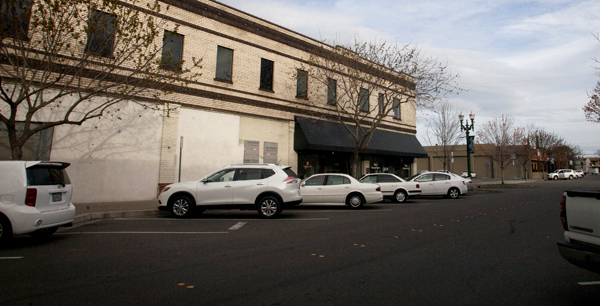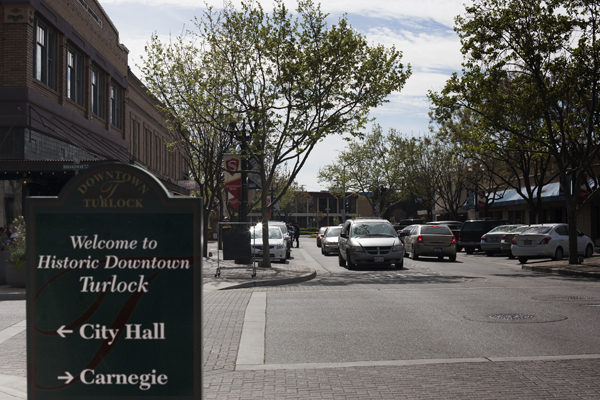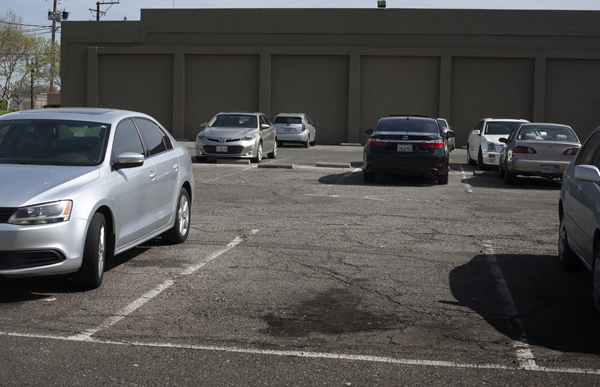
People think there isn't enough parking in downtown Turlock, but a recent study commissioned by the city shows that isn't true.
“Fifty percent of parking is not being utilized,” said Nayan Amin, president of TJKM Transportation Consultants, at a recent public workshop held at City Hall. Data collected by TJKM shows that of the 3,872 spaces available in downtown Turlock, only half of them are regularly used.
But even though there is plenty of parking available, a survey of Turlock residents and visitors shows that 72 percent believe there is a shortage of car parking in downtown. That could be because data collection also found that more than 800 cars remain parked for six hours, many in places where parking is only allowed for two hours maximum.
For instance Main Street, Olive Avenue, Center Street, and Broadway Avenue—which house the city's post office, bank and city hall among other things—is largely a two-hour parking zone. However, Amin’s staff found that a lot of cars stay parked in one spot for many hours. TJKM recommends the city enforce compliance on these busy streets even though it might earn the ire of downtown visitors and merchants who don’t want to see their customers ticketed.
“When you try to do something new, you are always going to have opposition,” he said.
Another reason for the perceived lack of parking is that drivers don’t know where public parking lots are located. According to TJKM’s survey, only 20 percent of people consider themselves fully aware of all the parking lots available in downtown.

Wayfinding signs pointing people in the direction of parking would be a simple, low-cost solution for Turlock, Amin said.
Katie Quintero, senior planner for the city, said there are plans underway to revitalize an existing surface lot located on the 100 block of South Broadway Avenue just behind bustling Main Street. “It is being used, but it is in bad shape,” she said. Her hope is that by improving its aesthetics, more people will be willing to park there.
The parking analysis was conducted as part of the mayor and city council’s 2015-2019 policy goals and implementation plan which calls for intelligent, planned, and managed growth. One of its action items is to develop a downtown parking plan. Main Street has wide sidewalks and pavers and in recent years hip restaurants and trendy shops have moved in, making it a desirable destination for Turlock residents and out-of-town visitors. The goal of the parking analysis is not to bring more cars into downtown, Quintero said, but to keep downtown’s pedestrian-oriented feel.

“Downtown is all about walkability,” she said. “The desire is that you are able to walk . . . and enjoy all the parts of downtown.”
The city has grown five-fold, from 14,000 residents in 1970 to 70,000 today, and city officials want to ensure that downtown keeps pace with future growth. Therefore the parking analysis also extrapolates out over the next twenty years, incorporating some intensification of downtown, and studied what would that mean for the area.
TJKM's proposed strategies are just preliminary, meant to address current issues. Other recommendations included increasing or decreasing the amount of time people can park in certain locations, and creating employee parking programs to encourage workers to park away from high-demand parking spots and leave them for customers.
Amin also made some mid-to-long-term recommendations for future needs. For example, a transportation demand management program could incorporate carpool programs and transit into plans for downtown parking improvements.
“The challenge is funding to make this happen,” he said.
These recommendations are still subject to approval. A joint Planning Commission/City Council meeting at 5 p.m. on June 28 will review the data collection results and preliminary suggestions and collect feedback from the public. The plan will then go to the Planning Commission and the City Council for adoption at a future meeting. All of these meetings are open to the public.





